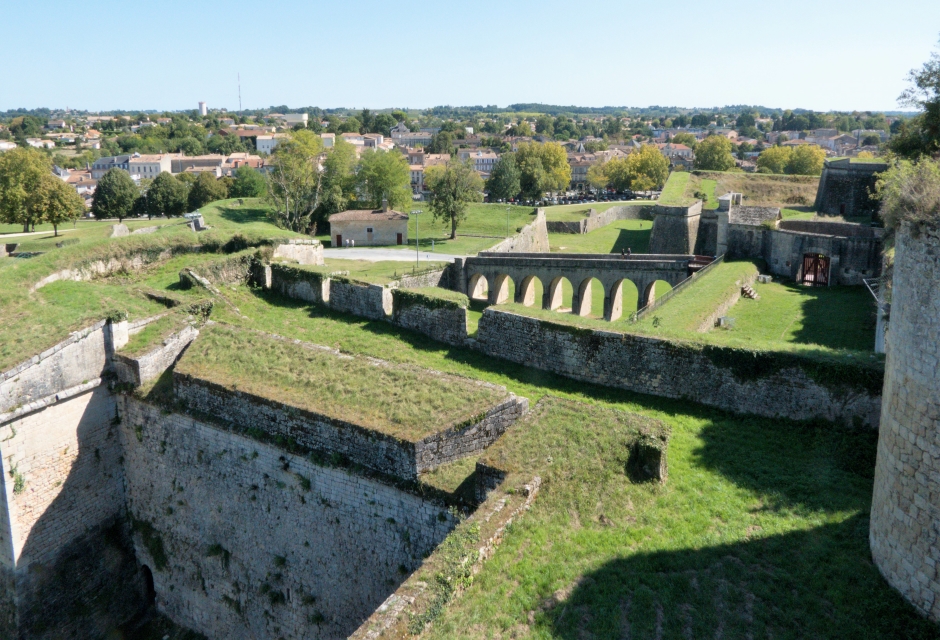Fortifications of Vauban
Impressive towns, city walls, forts, citadels, and watchtowers
Country: France | Type: Cultural | Theme: Fortifications, Secular Structure
Introduction to Fortifications of Vauban
A collection of 12 groups of fortified buildings and other sites, located along the northern, eastern, and western borders of France, the Fortifications of Vauban are named for the military engineer who designed them. Sebastian Le Prestre de Vauban (1633-1707) was considered the best designer of fortifications of his era and was the advisor to Louis XIV, counseling the king on how to make Frances borders more defensible. The list of buildings and sites that received the nod from UNESCO includes towns, city walls, forts, citadels, and watchtowers.
Included in the collection of 12 sites and buildings that make up the Fortifications of Vauban are:
- Besançon– At this location on the River Doubs, Vauban enhanced existing fortifications and built new ones. The citadel was built on a rocky spur and was made higher for better protection. Visitors can head to Fort Griffon and also view the six cannon towers Vauban built here.
- Briançon– The town of Briancon on the east coast sits in a very strategic position where five valleys meet. Vauban covered the high slopes with forts and placed a church on the most exposed bastion, hoping that enemies would not attack it.
- Mont-Dauphin – On the southeast coast, Mont-Dauphin was fortified in order to prevent attacks from Italy. Dubbed the “archetypical mountain stronghold”, Mont-Dauphin boasts an arsenal, two powder magazines, a rampart, and an incomplete church.
- Villefranche de Conflent – Sitting at the bottom of the country, Villefranche de Conflent is in the hollow of a deep valley. Vauban altered the town’s medieval walls for better defense. He also ordered a building of a fort on the highest ground and called it Fort Liberia. All the buildings there are extremely well preserved.
- Mont-Louis – Situated in the Eastern Pyrenees Mountains, Mont-Louis is a great example of a mountain citadel. Everything here was built from scratch including watch towers and two churches. Their condition is excellent.
- Blaye/Cussac-Fort-Médoc – Around the town of Blaye, Vauban planned a new town wall that included four bastions, two gates, and three demi-lunes, all added to the remains of the medieval wall. He also added Fort Medoc, Fort Pate, and an oval cannon tower, the latter considered a remarkable feat of 17th-century engineering.
- Saint-Martin-de-Ré – This is the best-preserved example of an island Reduit, consisting of a semicircular town wall, a citadel, and buildings to accommodate 1,200 men, including barracks, a chapel, an arsenal, and an officer’s pavilion.
- Camaret-sur-Mer – This is the location of the Camaret Tower, built to prevent the capture of the port of Brest. Today, it sits inside Iroise Marine Park and Armorique National Regional Park. The tower is fitted in a low semi-circular battery.
- Saint-Vaast-la-Hougue – Two towers were built here to protect the Cotentin Coast. They were meant for observation, for firing out to sea, and for communication via signals. The Hougue Tower is open to the public.
- Arras – This town at the top of France features one of Vauban’s first citadels. It is pentagon-shaped, built around a rectangular courtyard. It was discovered later, however, that it was in a bad strategic position. Today, the area around it functions as a park.
- Longwy – Louis XIV destroyed the old medieval town here and had Vauban build a new one. The fortress at Longwy is hexagonal with six bastions, and other structures on site include a church, arsenal, and barracks.
- Neuf-Brisach – Another town built from scratch, Neuf-Brisach is considered Vauban’s most impressive urban planning project. About 4,000 people inhabited the town, which was divided into 48 blocks set around a central parade ground.
Key Facts
Inscribed:2008
Nearest City:Various
Province:Various
Coordinates: Lat: 50.2825, Long: 2.7589
Accessibility:Easy
Services:Extensive
Highlights
- Vauban played a major role in the history of fortification
- The properties show a wide range of Vauban’s work
- The sites included are scattered throughout France
- The 12 sites are in the full range of landscapes
- Vauban took part in 48 sieges, helping him perfect his designs
Find a Tour
Like to visit? Fill out this form and reliable local hospitality companies will contact you to discuss your ideas.







